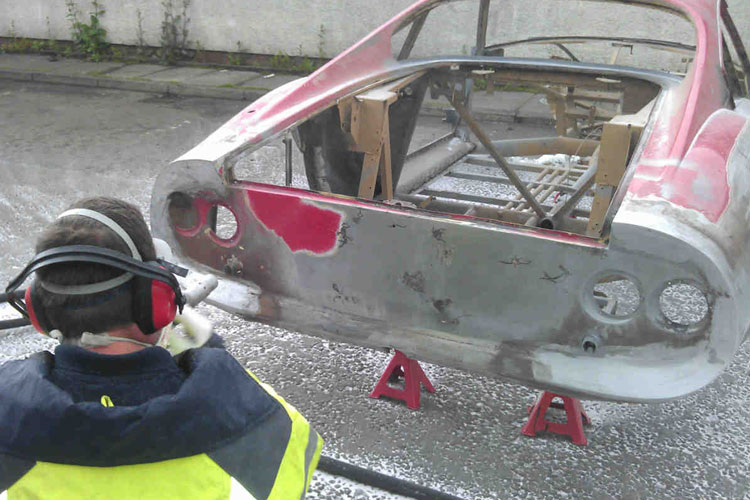Steel shot blasting is the most widely used process for cleaning, stripping and improving a metal surface. The grade or size of steel shot will determine the ultimate finish achieved on the surface of the metal. The round ball shape of the steel shot produces a clean, smooth and polished surface through a peening action created by the acceleration of the shot.
Steel Shot is manufactured by melting selected scrap in electric induction furnace. The chemical composition of molten metal is analyzed and strictly controlled by spectrometer. The molten metal is atomized and transformed into round particle and subsequently quenched and tempered in a heat treating process to obtain a product of uniform hardness and microstructure, screened by size according to specification.
Cast steel shot and grit are nonhazardous as received. Fine metallic dust is generated as the abrasive breaks down from impact and wear during normal use. Since the ferrous content is >96%, dust or fumes will consist mainly of iron or iron oxide. In addition, the fine steel dust created can be a mild explosion hazard.
Inhalation of dust formed during use, or shot, grit or dust particles will harm the lungs.
Abrasion injuries are possible during blasting operations or similar exposure, with high velocity direct exposure to skin.
Shot spilled or leaked onto floors can create hazardous walking conditions. When cleaning up large quantities of dust, a respirator should be used. Spilled shot and grit can be reclaimed for reuse, or disposed of as a nonhazardous solid waste.
Collected dust from blast cleaning or shot peening operations always contains contaminants from the surfaces of the parts being processed.
Suggested Industrial Vacuums for Recovery of Steel Shot Dust
PrestiVac HEPAPlus* Vacuums are specifically designed to safely vacuum toxic dusts. Equipped with a Certified Absolute HEPAPlus*filter with an efficiency of 99.995% on 0.2 micron so there is no risk of exposure or contamination for the operator or the environment. These vacuums are tested for absolute filtration. Testing Method: IEST RP-CC034.3. H14. MIL-STD 282 / A.S.T.M. - D2986-91. MPPS method EN 1822.
Which Industries work with Steel Shot?













